지난 4월 25일 EAFFP(동아시아호주철새파트너쉽)의 newsletter 에 한국강살리기네트워크의 겨울 철새 조사 활동이 발표되었습니다.
그 내용을 공유합니다.
https://www.eaaflyway.net/2022/04/25/citizen_science_monitoring_rivers_rok/
Citizen Scientists in Republic of Korea Monitor Birds in River and Streams
On 5th February 2022, on occasion of World Wetlands Day, the Korea Network for River and Watershed hosted the 3rd Citizen Monitoring of Migratory Birds along rivers and streams in the Ro Korea, with 223 attendees from 50 organizations for stream & river conservation.
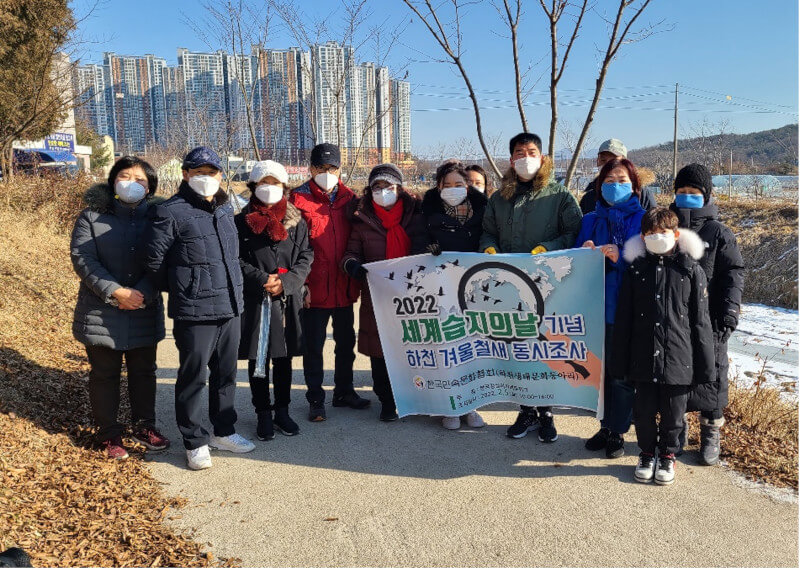
Monitoring at Dochon Stream © Unran Jeong, Korea Folk Cultural Association
|
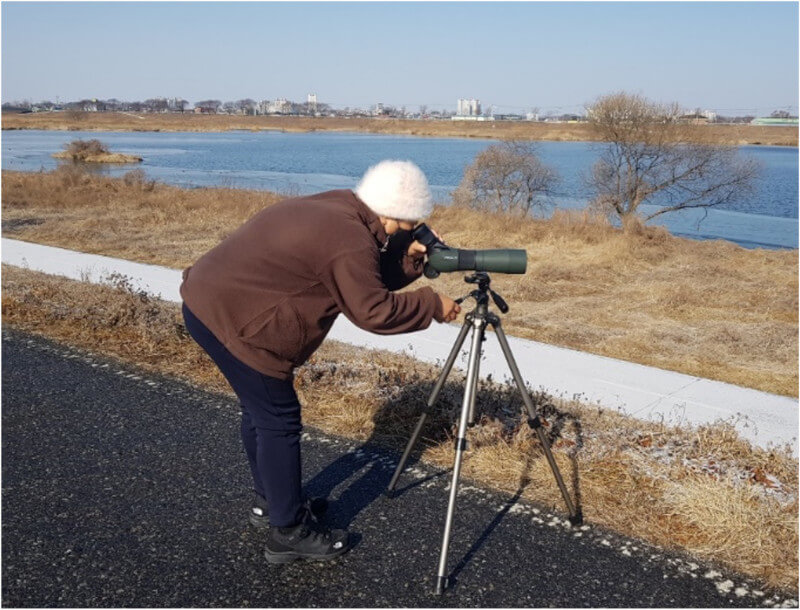
Man-Kyeong River © Eunsuk Lee, River – saving Iksan Network |
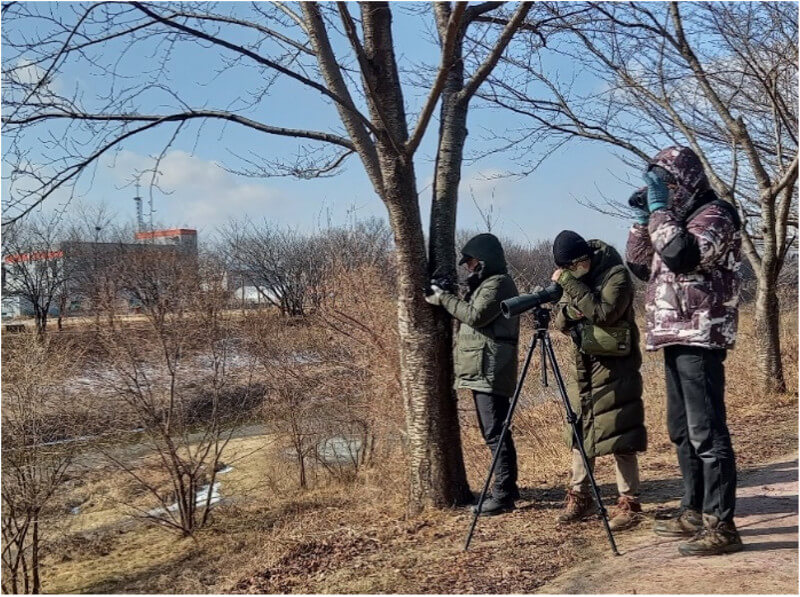
Hwangguji Stream © Eunhwa Hong, Suwon Center for Environment Movement |
The Korea Network for River and Watershed (KNRW) was formed on the 1st Korea River Day held in Yangpyeong in 2002 after the necessity was raised at the Korea-Japan River Restoration Exchange Workshop by the Citizens’ Movement for Environmental Justice in 2000. This network focused on carrying out various activities to 1. monitor and solve problems regarding ecosystem destruction, 2. provide for water resources and environmental sustainability, 3. improve residents’ understanding of basin conservation, with river and stream-loving NGOs. Currently, 58 organizations have active projects and collectively contributing to the conservation of Korean streams, including conferences for Korea River Day which has been held yearly since 2002, the production of policies related to water campaigns, the establishment of the four major river basins networks, river monitoring methodology research and implementation, and international exchange activities.
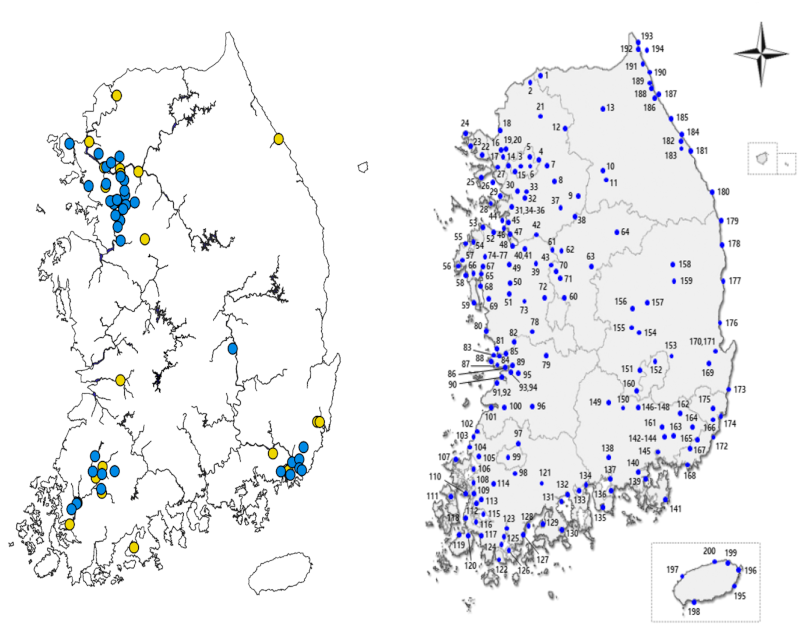
Left: Citizen monitoring sites (Blue: Only citizen monitoring sites, Yellow: Overlapping national monitoring sites) © Freshwater Ecology Lab of Pusan National University Right: National monitoring (Winter Waterbird Census) sites © National Institute of Biological Resources (NIBR)
Ro Korea is located in the East Asian-Australasian Flyway and wetlands are distributed throughout the country, so it plays an important role as a migratory birds stopover. Due to its geographical importance, NIBR under the Ministry of Environment (MOEK) has been supporting the Winter Waterbird Census every year since 1999 which is a survey to identify the status of migratory birds arriving in wetlands (rivers, streams, estuary, reservoirs, coastal areas), plays an important role to secure basic data for migratory birds and habitat protection (the census data annually contributes to Asian Waterbird Census). However, not all rivers and streams are included as monitoring sites, so the overall status of migratory birds utilizing riverine habitats in the Ro Korea remains limited.
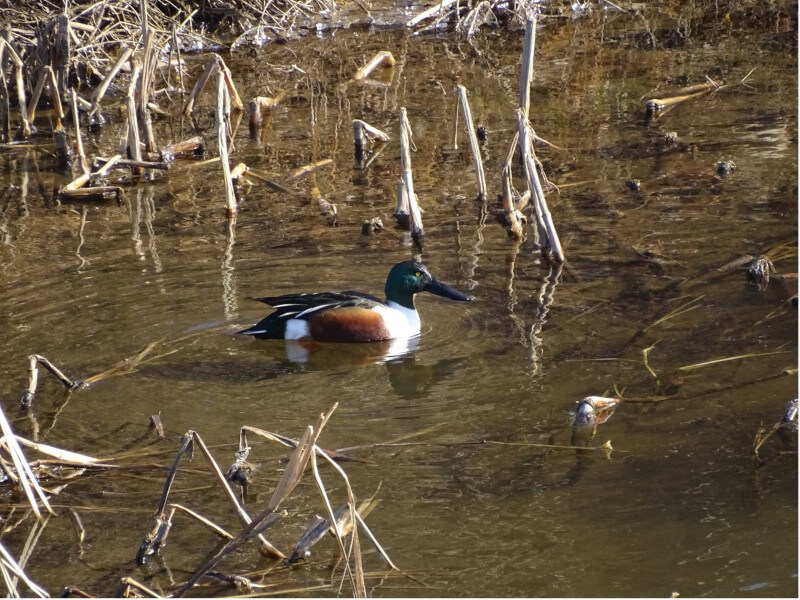
Northern Shoveler in Hwangguji Stream © Eunhwa Hong, Suwon Center for Environment Movement
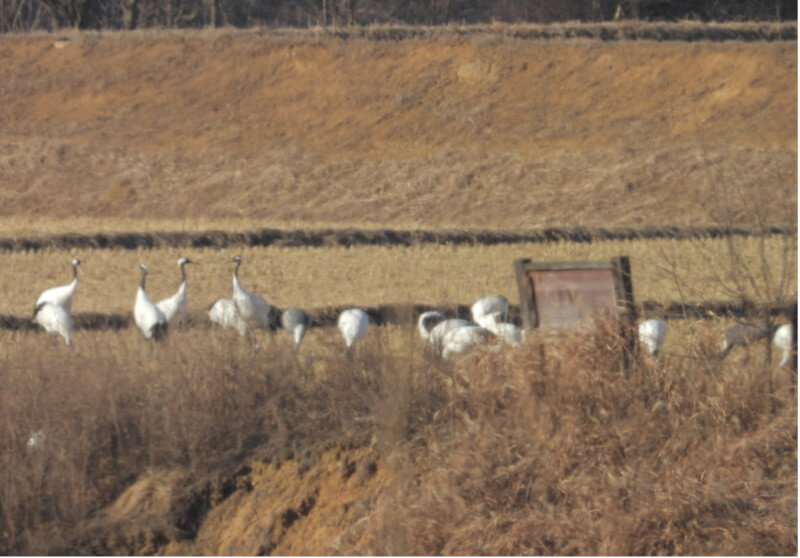
Red-crowned Crane in Im-Jin River © Sungwook Choi, Hantan-River Network
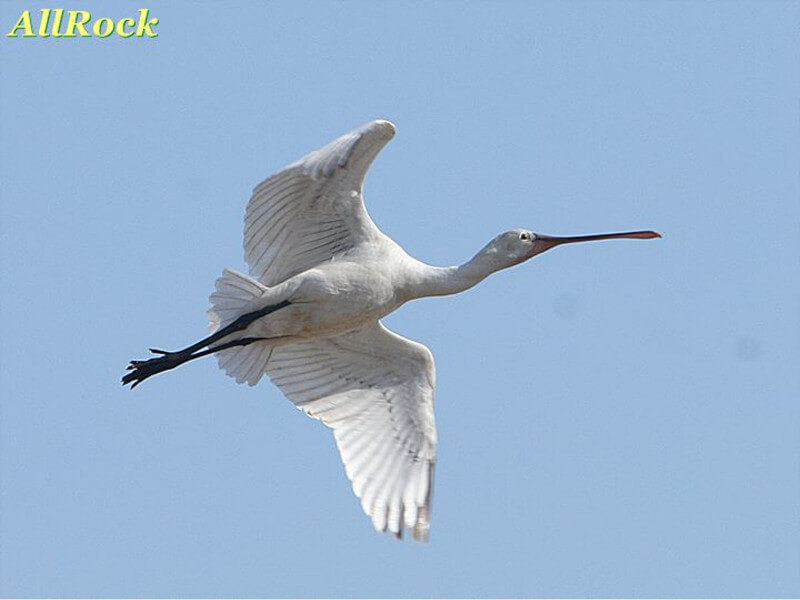
Eurasian Spoonbill in Goeup Stream © Bumsoo Kim, Goheung Birding Group
To improve monitoring efforts, the Korea Network for River and Watershed has been implementing the Citizen Monitoring of Migratory Birds with citizen scientists nationwide since February 2021. So far, monitoring has been conducted 3 times. Fifty organizations under the Korea Network for River and Watershed have participated in the national monitoring event conducted on 5th February at 60 sites. A total of 165,581 individuals from 34 families covering 116 species were recorded. Among them, 139 individuals from 5 species, were in the national threatened species list Class I, 9,311 individuals from 10 species, were in Class II, and 3,871 individuals from 15 species, were National Natural Monuments.
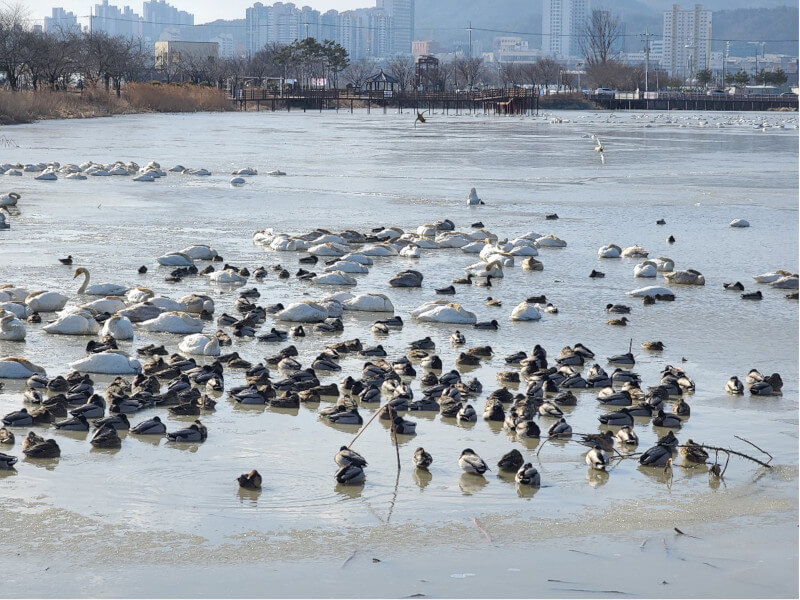
Swarm of Whooper swan and Mallard in Jisan Saetgang © Changeon Park, Bird research center of ecology and environment
Twenty of the survey sites were included in the national Winter Waterbird Census points, and 40 were additional sites of the Korea Network for River and Watershed. A total of 25,257 individuals covering 90 species were observed at these 40 additional sites. from which 2 individuals of 1 species were Class I of the nationally threatened species list t; 3,403 individuals, from 7 species, were in Class II; and 1,235 individuals, 8 species, were natural monuments.
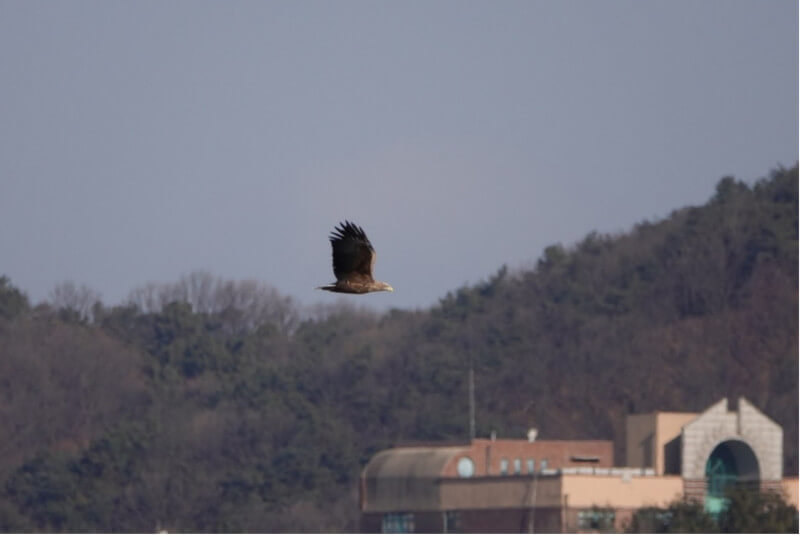
White-tailed Eagle (class I endangered) in Gongneung Stream © Wonbae Park, Citizen Birding club
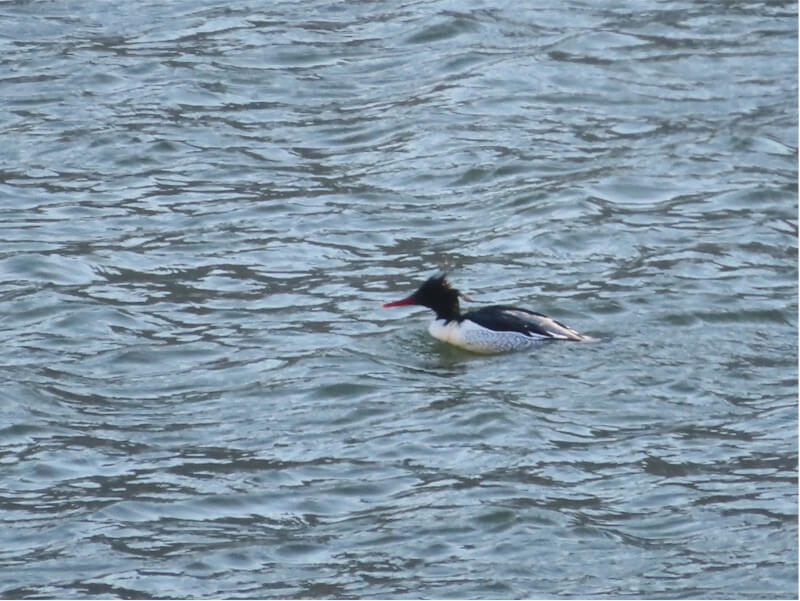
Chinese Merganser (class I endangered) in Han River © Seojeong Park, River – Network
There are challenges to monitoring migratory bird status for small streams by citizen network system through the national winter waterbird census, but it is still an important effort to identify sites for protected species such as endangered species and natural monuments. It is hoped that the survey would expand and long-term monitoring would be sustained to build up an important database on migratory birds using riverine habitats, in addition to the National Winter Waterbird Census.
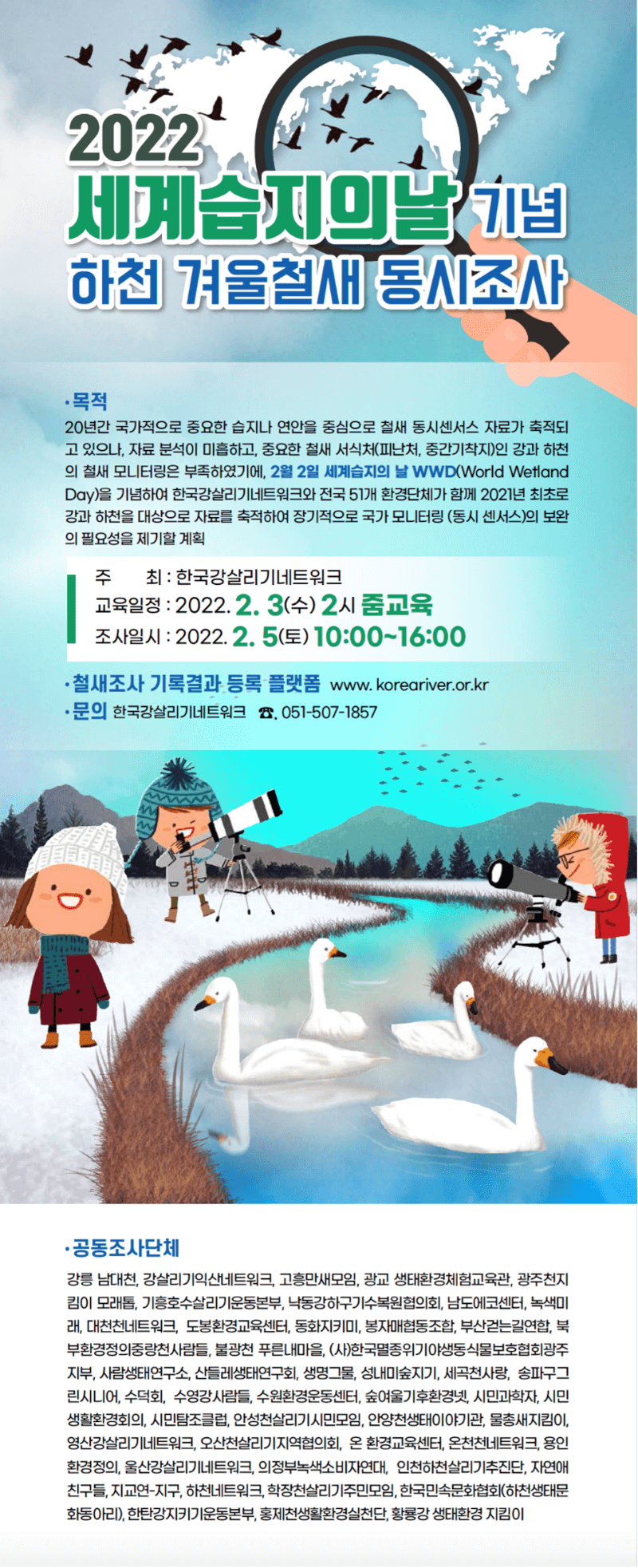
2022 Winter Bird Citizen Monitoring Program Poster © Korea Network for River and Watershed
More information: Website for the Korea Network for River and Watershed
2020-2021 Winter Waterbird Census of Korea. NIBR.
Article drafted by Ms. Yerim Lee from Freshwater Ecological Lab of Pusan National University

